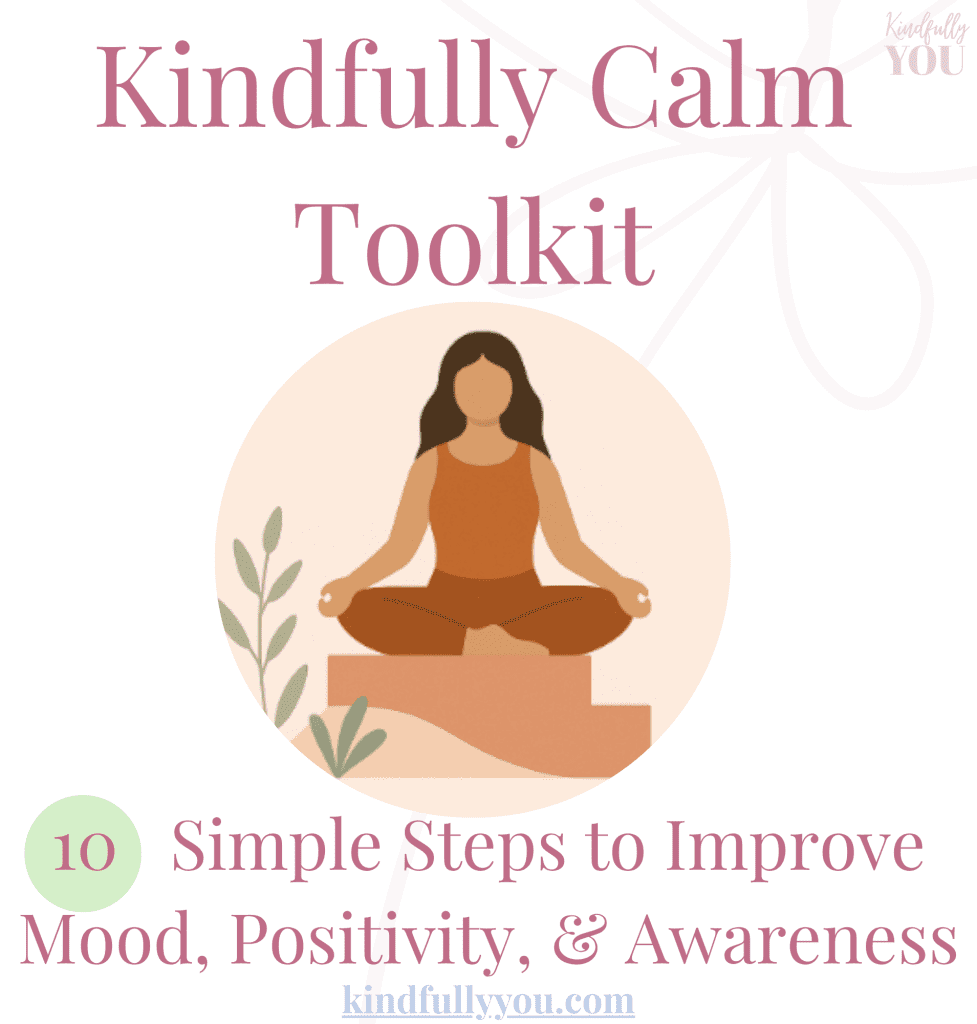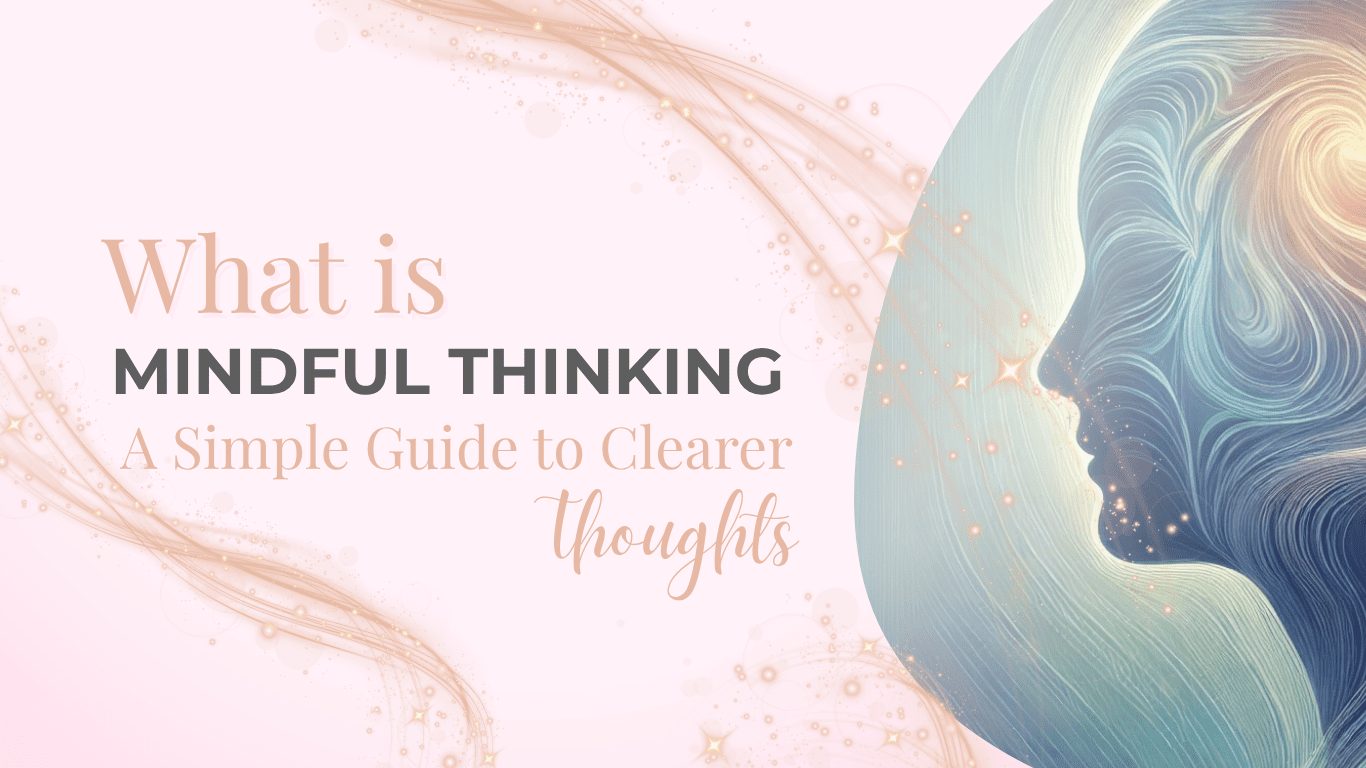Do you ever feel like your mind’s a browser with too many tabs open—and half of them are frozen?
If your thoughts are bouncing between to-do lists, what-if worries, and “Why did I say that?” replays from three days ago, you’re not alone. The modern mind is a busy one.
That’s where mindful thinking comes in. It’s a gentle, grounded way to step out of mental overwhelm—and into something that feels a little more spacious, a little more you.
Let’s take a kind and practical look at what mindful thinking really is, and how it can support you through the messier bits of everyday life.
What Is Mindful Thinking?
In plain terms, mindful thinking is the practice of noticing your thoughts with awareness and kindness—without immediately believing, reacting to, or running away from them.
It’s not about emptying your mind or pretending everything is fine. It’s about seeing your thoughts clearly (even the messy, anxious, or frankly ridiculous ones) and responding from a place of steadiness rather than spiralling.
You’re not trying to “fix” your thinking—you’re simply learning to meet it with curiosity and compassion. Which, frankly, is a radical act in a world that tells us to hustle, overanalyse, and constantly do better.
Why Mindful Thinking Matters
Mindful thinking helps you create space between the thought and the reaction. And in that space, you find clarity. And (occasionally) sanity.
Here’s how it can help:
- Reduces overthinking – You spot when your mind’s off on a loop and gently bring it back
- Lowers stress and anxiety – You learn to respond calmly, rather than react from panic
- Improves focus and decision-making – A clearer mind makes wiser choices (even if it’s just what to eat)
- Boosts emotional resilience – You feel your emotions, without being steamrolled by them
- Builds self-awareness – You start to understand your patterns instead of being ruled by them
No miracle cures, just small, steady shifts.
How to Practise Mindful Thinking
You don’t need to light a candle, sit in silence, or get it all perfect. You just need a willingness to pause and notice. Here are four ways to begin.
1. Observe Your Thoughts (No Need to Fix Them)
✔ How to practise:
When a stressful or repetitive thought shows up, try not to engage or argue with it. Just pause, breathe, and notice it like you’d notice a cloud drifting by. No need to chase it or explain it.
✔ Why it works:
Thoughts lose their grip when we stop feeding them. This helps break the habit of overthinking and reminds you: You are not your thoughts.
2. Use Mindful Breathing to Reset
✔ How to practise:
Pause. Take five slow, steady breaths. Feel the air as it moves in and out of your body. That’s it.
✔ Why it works:
Your breath is always available, always real. It pulls your focus away from the mental noise and into something calm and grounding.
3. Gently Reframe Negative Self-Talk
✔ How to practise:
Notice when your inner critic pipes up (e.g., “I’ve messed this up again”). Instead of arguing, try a kinder thought: “I’m learning. This is hard, and I’m doing my best.”
✔ Why it works:
Reframing isn’t about toxic positivity—it’s about treating yourself with the same kindness you’d offer a friend.
4. Try Mindful Pauses Throughout Your Day
✔ How to practise:
Set a soft reminder every few hours to pause for 30 seconds. Check in: What am I thinking? How am I feeling? What do I need?
✔ Why it works:
These mini check-ins keep you connected to yourself, instead of running on autopilot.
Mindful Thinking vs. Automatic Thinking
Here’s a quick comparison:
| Mindful Thinking | Automatic Thinking |
|---|---|
| Observing thoughts with awareness | Reacting without noticing |
| Responding calmly | Spiralling emotionally |
| Recognising patterns | Being swept away by them |
| Returning to the present moment | Getting stuck in the past or future |
It’s not that one is “bad” and the other is “good.” It’s just that mindful thinking gives you more choice—and a little more breathing space in your own head.
Kindful Last Thoughts
So, what is mindful thinking? At its heart, it’s simply a way of being with your thoughts that’s rooted in curiosity, not criticism.
You’re not aiming for a silent mind or inner peace 24/7 (although that does sound lovely). You’re aiming to notice, pause, and respond—in ways that feel more honest, kind, and spacious.
And if today your thoughts feel tangled and loud? That’s okay too. Take a breath, observe them without judgement, and remind yourself: you don’t have to believe everything your mind says.
Your Free KindfulnessToolkit for Calmer, Happier Days
If you’re ready for a quick, gentle way to feel calmer, brighter, and more like yourself again, the free Kindfully Calm Toolkit is for you. Inside you’ll find easy, no-fuss tools you can use in minutes to shift your mood, relax your body, and bring happier vibes to even the busiest day.
Don’t wait to feel better. Download here it now and give yourself the gift of calm and ease today.

For further reading What is Living Mindfully


